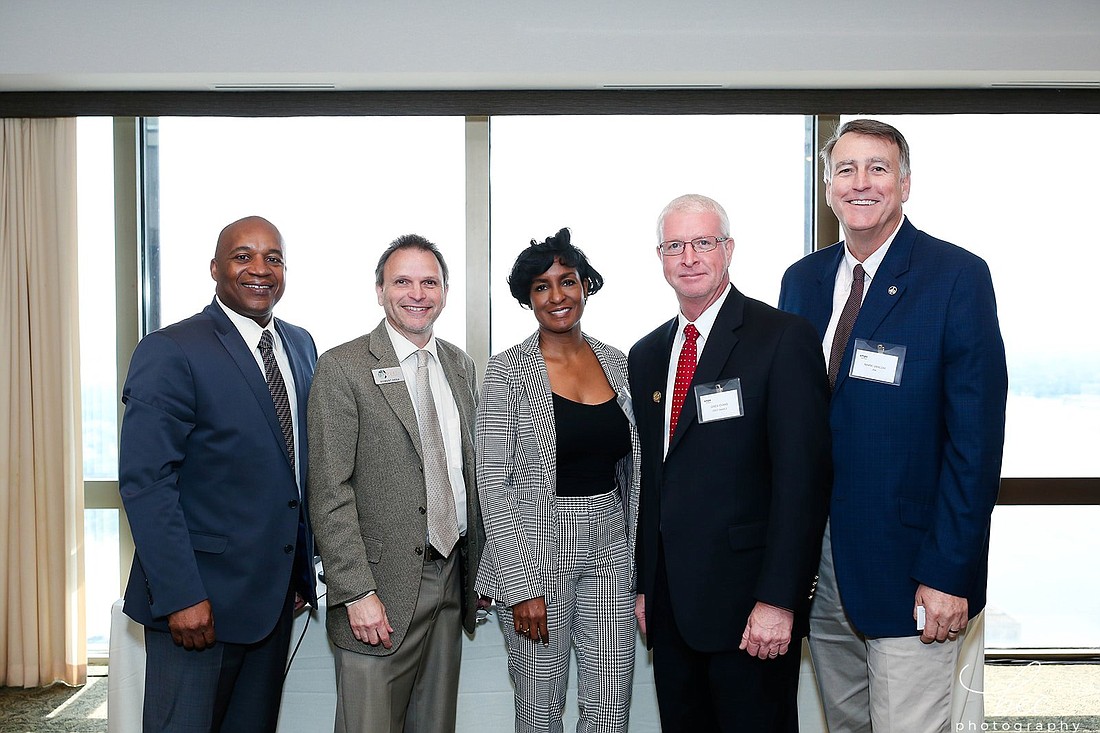
Jacksonville Transportation Authority CEO
Ford said JTA soon will be on an “aggressive drive to decarbonize our fleet and get to zero emissions.”
According to Ford, the $1.2 trillion federal Infrastructure Investment and Jobs Act signed by President Joe Biden in November will have money for transportation decarbonization projects.
He said reaching that target by 2050 is easier said than done.
The public transportation organization invested more than $50 million in 2014 with a goal to convert 100 vehicles from diesel to compressed natural gas.
Although lower in emissions than diesel, Ford acknowledged CNG may not prove to be the fuel to take JTA to zero emissions.
Ford said JTA buses have a 12-year life expectancy, so regardless of the fuel powering the asset, the authority must make the most out of its investment.
“Our investment with CNG needs to be maximized before we fully start converting to electric,” Ford said.
“And if we go electric … is that the BlackBerry or is that the iPhone versus going hydrogen fuel cell?”
JaxPort Director and General Manager of Business Development
Executives at large global shipping companies are evaluating “what is the fuel of the future to power these big ships,” Peek said.
Peek said liquid natural gas appears to be emerging as the leading candidate.
Peek said Jacksonville-based TOTE Maritime launched the world’s first LNG-powered containership in April 2015 from San Diego.
Crowley, also based in Jacksonville, built the first LNG vessel capable of transporting containers and automobiles.
“We have people from all over the world come in to see what Crowley and Tote have done to build these vessels,” Peek said.
JaxPort is working to electrify support vehicles, cranes and equipment at its terminals to reduce reliance on carbon fuels and “try to green the port as best we can,” Peek said.
He said a JaxPort tenant has ordered three new electric cranes, a $35 million investment.
According to Peek, all new cranes at the port will be electric.
Florida Department of Transportation District Two Secretary
Automobile electrification has given Florida Department of Transportation district secretaries a problem to solve when it comes to EVs and hurricane evacuations.
Evans said FDOT has been thinking about how to connect mobile EV chargers to diesel-powered generators for use by its Road Ranger corps to charge vehicles that might run out of power during traffic backups on Florida’s interstate highways.
He said FDOT also is considering how to deploy temporary quick-chargers at Florida highway rest stops that also would be powered by fossil fuels.
“It sounds contrary, but maybe I can fast-charge four or five vehicles, maybe,” Evans said.
He noted that 6.8 million Floridians had mandatory or voluntary evacuations during Hurricane Irma in 2017, creating a three-day gridlock along Interstate 75.
“Think about the number of electric vehicles on the road back then compared to what there are today,” Evans said.
FDOT is considering public-private partnerships to build privately owned EV charging stations on public land.
Jacksonville Aviation Authority CEO
VanLoh said decarbonization for aviation “is not an easy fix.”
“Fossil fuels will be here a while, at least in the aviation industry, until something better comes along. It may be some time,” he said.
Although American Airlines flew the first of several passenger flights in December using biofuels, Van Loh said prices still are not cost-effective for every industry.
“That fuel is three times the cost of jet fuel, so you can imagine ticket prices after that takes over,” VanLoh said.
“I wouldn’t be in a hurry to get on an electric passenger jet yet. Those days are coming.”
JAA is starting to retire diesel-powered equipment, has installed electric vehicle charging stations and allows airplanes to plug into the terminals overnight to keep them cool or warm without fuel.
When JAA heard that car rental company Hertz would buy 100,000 electric-powered Teslas, VanLoh said there will need to be a solution for quick-charging that fleet at the airport.
“We can’t put a big power cable to the airport to be able to plug in 100 Teslas that can charge that fast,” he said.